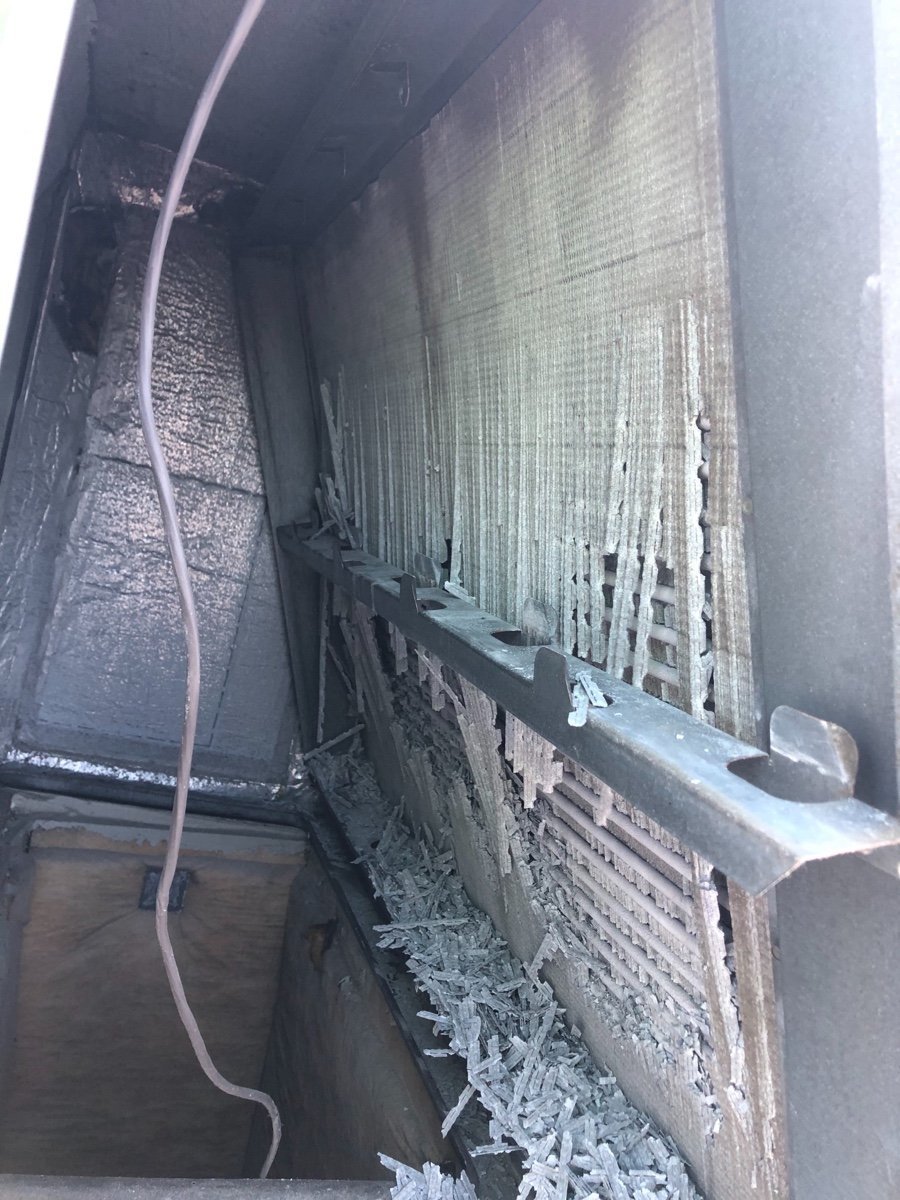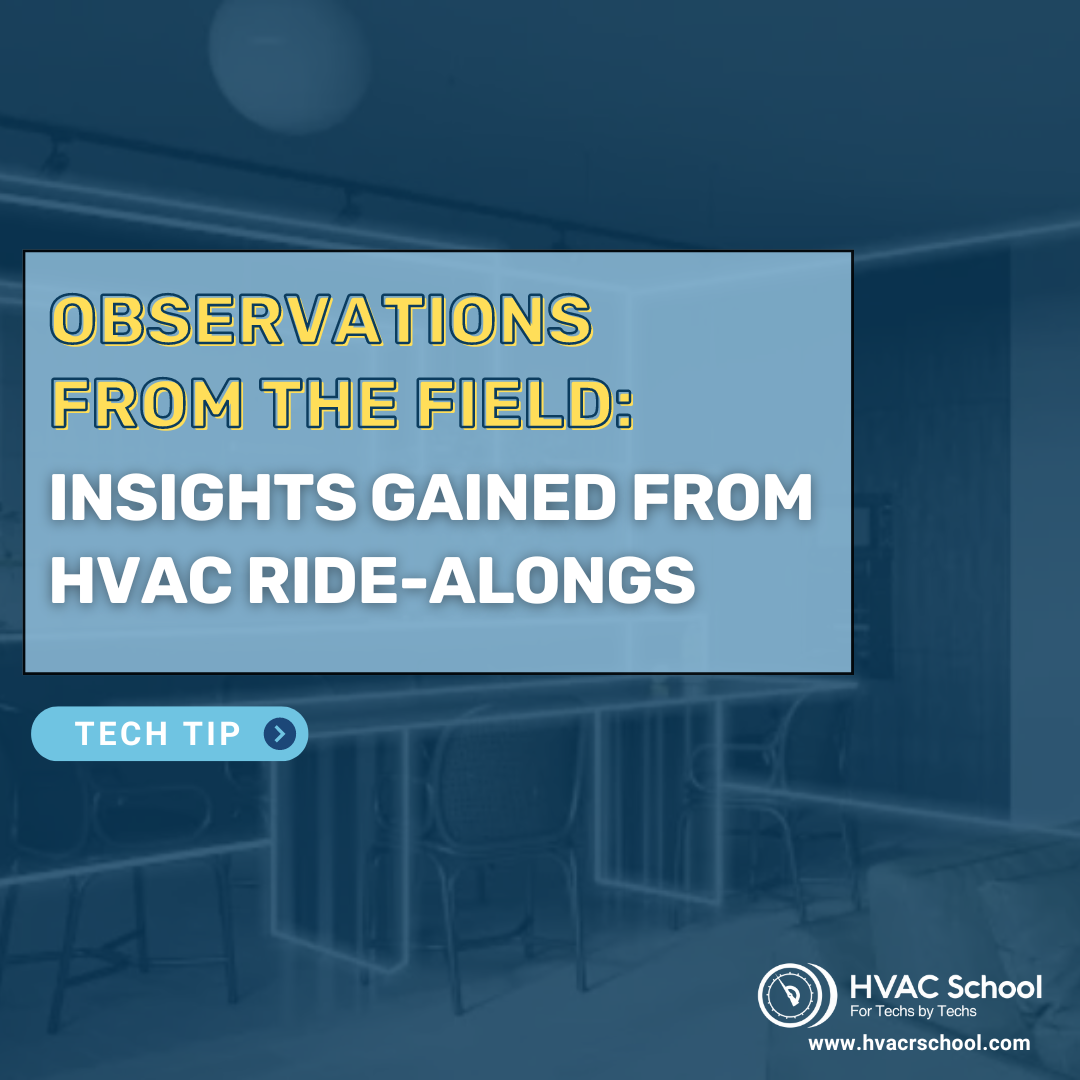Get Tech Tips
Subscribe to free tech tips.
Fan On or Fan Auto

Full disclosure: as a technician, I was guilty of setting the fan to “on” at the thermostat for many years. I never really thought of any of the negative impacts that could happen.
I wanted to circulate the air and keep air moving through the high-efficiency air filter that most of our houses had. Later, I learned that fan “on” is not a good idea in many scenarios.
For this discussion, I will be talking about the cooling season in a humid climate. Many adverse impacts may occur in the heating season, depending on the region.
Things to be aware of when running the fan “on”
After a cooling call with the fan running, condensate on the coil will evaporate back into the living space. Some thermostats combat this by having a fan “off” period at the end of a cooling call to let the coil drain.
If the ducts are in unconditioned spaces outside the house's thermal envelope, the sensible heat will be added back to the space. If the ducts are warmer than the air traveling through them, there will be heat transfer. If there is any duct leakage, latent heat (moisture) will be added as well. Latent heat gains do not only apply to return duct leaks. Supply air leakage can also contribute to this.
Commonly, the HVAC system can cause the house to go under negative pressure. When this happens, sensible and latent heat will be added. A common cause of the pressure imbalance is when the duct system is in an attic or crawl space, and the return duct has fewer connections than the supply ducts.
Since the supply has more connections than the return, there is more of a potential to leak air. If the supply air leaks into the attic or crawl space, this can cause the living space to go under negative pressure. The leaked air is replaced with either attic, crawl space, or outside air. One CFM (M3/h) in = one CFM (M3/h) out.
Ducts in conditioned spaces with panned returns can add latent and sensible heat as well. This happens when the panned joists and studs are not sealed by the HVAC contractor on all six sides. Joists and studs are part of the building network. When not air-sealed during construction by the builder, they will communicate with the air outside the building envelope. With blower door testing and air changes per hour requirements now code in many jurisdictions, houses are being built much tighter. In an older home, with panned returns, expect to be bringing in some outside air.
Even if the ducts are sealed and 100% in the conditioned space, it still costs money to run the fan. Running a PSC motor 24/7 can be costly. (ECM motors on a properly sized duct system have considerably lower operating costs when compared to PSC motors.)
The duct leakages and pressure imbalances mentioned above will also occur during a cooling call. Most of the time, these issues can go unnoticed because of the ability of the HVAC system to overcome or mask them.
The goal is to get maximum customer comfort with minimum power usage and maximum system longevity. In many cases, leaving the fan in the ON position detracts from these goals.
Hopefully, this Tech Tip will make you think twice about running the fan “on.” Every situation is different. I encourage you to think outside the box—if you are not already.
—Neil Comparetto











Comments
This is where Home Performance testing comes in. How leaky is the house? How many ducts are connected to outdoors? Are there any real stinkers that are super connected to outdoors? There is a lot of opportunity to work together. My HVAC guy likes me, I show up with high end jobs already sold for him.
BTW measured monthly cost for running ECM motors is $3-10/mo from our projects. Sometimes even lower if you are using a modulating piece of equipment that runs a lot.
I agree, though, as a blanket statement it’s dangerous. Cheers to you for saying so.
This is where Home Performance testing comes in. How leaky is the house? How many ducts are connected to outdoors? Are there any real stinkers that are super connected to outdoors? There is a lot of opportunity to work together. My HVAC guy likes me, I show up with high end jobs already sold for him.
BTW measured monthly cost for running ECM motors is $3-10/mo from our projects. Sometimes even lower if you are using a modulating piece of equipment that runs a lot.
I agree, though, as a blanket statement it’s dangerous. Cheers to you for saying so.
I work in a hotel with an indoor heated pool. They have 2 cooling systems only 1 is running. There’s constant moisture off the ductwork in the high ceilings. Is that an air leakage problem from the return or the discharge air duct?
I work in a hotel with an indoor heated pool. They have 2 cooling systems only 1 is running. There’s constant moisture off the ductwork in the high ceilings. Is that an air leakage problem from the return or the discharge air duct?
I’m not an advocate for keeping the fan in the on position but it does help with de-stratification of the air in multi story homes.
I’m not an advocate for keeping the fan in the on position but it does help with de-stratification of the air in multi story homes.
In Florida where I run my business, running the fan “on” re-introduces unnecessary moisture back into the living space. Even when in “Circulate” the off time doesn’t always allow for proper drain time of condensate. We always recomend “auto”
In Florida where I run my business, running the fan “on” re-introduces unnecessary moisture back into the living space. Even when in “Circulate” the off time doesn’t always allow for proper drain time of condensate. We always recomend “auto”
If you are in an area or have an application where fan on setting is detrimental, you must also consider other control sequences that may be creating the same scenario as a fan setting of “on”.
For your consideration:
Many manufacturers of whole house dehumidifiers installation practices include utilizing the AC duct system to also distribute the air for the dehumidifier and a fan control interlock that runs the AC system fan when humidity is high… let that sink in…
So, if your house is running high humidity, then we basically set the fan to on? hmmmm
If you are in an area or have an application where fan on setting is detrimental, you must also consider other control sequences that may be creating the same scenario as a fan setting of “on”.
For your consideration:
Many manufacturers of whole house dehumidifiers installation practices include utilizing the AC duct system to also distribute the air for the dehumidifier and a fan control interlock that runs the AC system fan when humidity is high… let that sink in…
So, if your house is running high humidity, then we basically set the fan to on? hmmmm
To leave a comment, you need to log in.
Log In